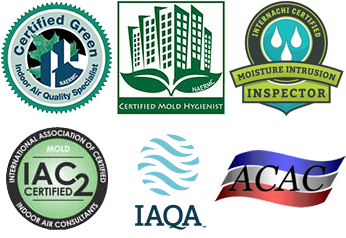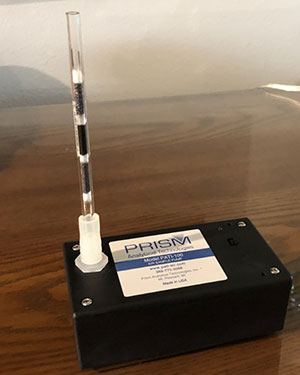Volatile Organic Compound (VOC) Testing
Elite Mold Services
Providing Testing for VOC’s in Your Home or Business

What are VOCs?
VOCs are volatile organic compounds, which is a all-encompassing term for thousands of chemical compounds that may be found in your indoor air. These VOCs come from building materials, cleaning products, and personal care products such as hairsprays, perfumes, shampoos, and lotions. Most fragrances from air fresheners and perfumes are VOCs. Even the “greener” products still contain and off-gas VOCs. Some VOCs such as formaldehyde, benzene, and methylene chloride are identified as cancer-causing substances.
How do you test for VOCs?
We have several options available for measuring volatile organic compounds but our preferred way is using a low-flow pump and a sorbent tube. This is run for 2-4 hours and then is shipped to a special chemical laboratory for analysis. We obtain results within 3-4 days of the appointment and a detailed report is issued identifying the types and levels of the VOCs within the property.
Handheld meters, commonly referred to as PIDs, are helpful to get immediate results on total VOC (tVOC) levels but cannot distinguish what types or the individual levels.
Chemicals like formaldehyde fall out of the typical VOC categories covered under our standard VOC test but can still be sampled at the same time. This test uses a specific tube for formaldehyde only and runs for 20 minutes. Majority of times, our clients have us perform both tests to be thorough with the analysis of the indoor environment.

When should I have VOC testing done?
We highly suggest having VOC testing when someone has an unexplained illness within a property and the investigating for possible causes begins. We always recommend performing a thorough visual inspection for possible sources as this may quickly identify the cause(s) such as an open paint can below a sink or spilled cleaning chemicals.
The VOC levels within a new home or recently renovated property will likely be high due to the new building materials like paint, carpeting, flooring, etc. The use of spray foam for home’s insulation has become popular in the last 10 years. This product has a history of issues if not mixed properly but also will create a tight seal of the home, effectively trapping building-related VOCs inside the property. We highly recommend having your home tested for VOC levels in either of these scenarios.
VOCs cannot be evaluated on odor alone. There are many that are not detectible to the nose and testing with specialized equipment and laboratory analysis would be the only way to effectively determine types and levels of VOCs within the home.
Many times, new parents will become very aware of the products they are using for their nursery’s and on their newborns. An entire market is dedicated to low-VOC products to be used in nurseries like low or no-VOC paint, low-VOC mattresses, “green” carpets, organic bedding, clothing, and more. If you are expecting or have recently added to your family, a VOC test within the newborn’s bedroom is a good way to make sure the environment is safe for the little one.
Offices, schools and warehouses can benefit from VOC due to all of the various activities in these buildings that can produce VOCs. From printing, cleaning and production all of these activities can release VOCs into the air causing possible health issues for the occupants.
What if you find a problem?
With our detailed reports provided from the laboratory, we can see what the possible sources of your VOCs are and then recommend an action plan to lower them. Sometimes, it may simply involve removal of a new product such as a cheaper mattress, carpeting, or a cleaning product. Other times, it could involve a more detailed approach such as bringing in conditioned fresh air to help dilute the VOC levels inside.
The use of portable HEPA filters is very popular nowadays but selecting the right one is critical to help reduce VOC levels. HEPA filtration alone will not remove VOCs as this is a particulate filter and not a gas remover. Let us help you diagnose the issue so we can properly suggest the correct filtration device to address your specific issue.
How much does VOC testing cost?
We would love to go over the particulars on your project so a quick call to our office at 407-901-9182 would be required to get the details for your building so we will know how many samples you would need. Our indoor air quality professionals will walk you through the process of pre-inspection/sampling procedures to ensure an accurate sample collection. We will also be with you every step of the way from pre to post results. Call us today!
